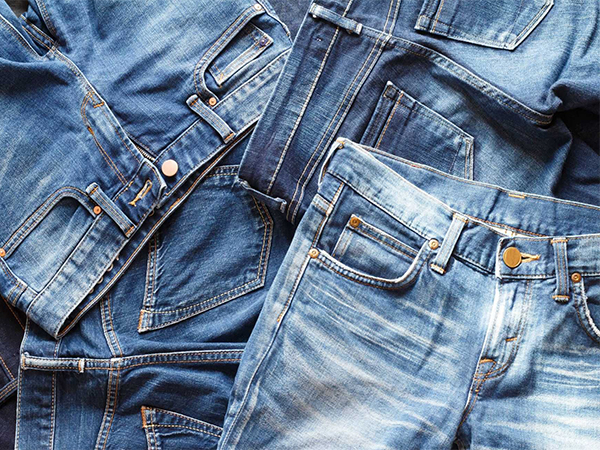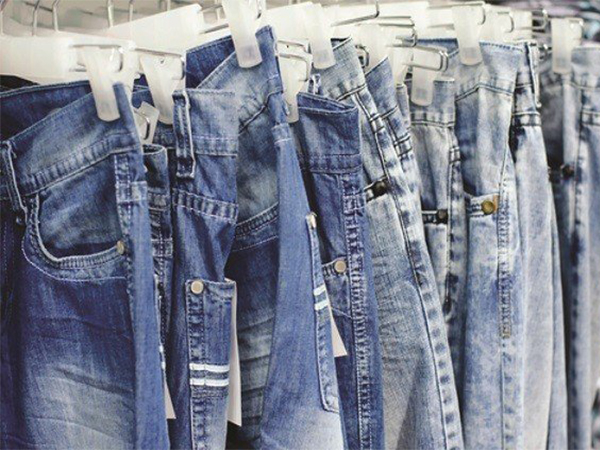It can be said that the process of designing and sewing jeans is the most important step in tailoring jeans because this is a job that requires the designer to have many years of experience. Every time a new model needs to be produced, the designer must go through many trials to come up with a satisfactory model, so in the article below, The Blue Cotton wear will share with you too. Design and cut jeans.

Try the shape of jeans
After completing the preliminary design of each part, the designer will cut the fabric and sew to test the shape of the pants. The designer will then adjust the size of the parts if necessary. Each time the size is adjusted, the designer must try on a pair of pants. After form testing is completed, the manufacturer will conduct fabric testing.
Try fabric
For any fabric sample, manufacturers must go through a fabric testing process. Fabric testing to determine the degree of shrinkage of the fabric after washing. From there, manufacturers calculate how to cut the fabric so that after washing, the pants shrink to the desired size. Normally, to test fabric, the designer will cut a sample of pants by hand, then the pants are sewn and washed to determine the parameters.
Make a diagram for cutting fabric and sewing
Cut fabric
In the process of sewing jeans, fabric cutting can be considered the second most important step after design. In the jeans manufacturing industry, the fabric is cut industrially, about 50-100 layers at a time. Therefore, just a small mistake in cutting the fabric can cause the entire batch of pants to be thrown away without being able to be completed.
To cut jeans, people spread the fabric on a large flat surface, the fabric layers are stacked on top of each other and must be absolutely flat.
Based on the cutting diagram, the fabric will be cut into small parts corresponding to each part of the jeans. Depending on each manufacturer's process, each part of the pants will be numbered or marked and sent to the corresponding sewing department.
May
Nearly all jeans manufacturers make jeans on an assembly line. Here, the parts of the jeans will be assembled together to form a complete pair of pants.
Jeans manufacturers may have different sewing processes in which the parts of the jeans will be sewn in a certain order. Below is an example of the jeans sewing process.
Prepare the parts
Sewing gasoline eyes (pants belt - pants leech)
Gasoline eyes are quite easy to sew on jeans, especially with the help of a specialized sewing machine.
Sewing the front pocket and watch pocket The front pocket and lining fabric will be sewn together, the watch pocket is also sewn onto the front pocket waiting to be assembled onto the pants.
Sew or mark button eyes and button closures.
Many manufacturers only mark the place where the button eyes will be sewn, and only sew the button eyes after the pants are washed to avoid the button eyes being affected during the washing process.
Assemble the body first
Sew the front pocket of the jeans to the body of the pants. Normally, manufacturers use 2-needle machines to create 2 parallel threads. If the manufacturer uses a single-needle machine, it must be sewn twice.
Sewing pants zipper: Pants zipper is sewn directly to the front of the pants.
Sewing the front crotch: After the front pocket and zipper are completed, the last step of the front part of the pants is sewing the bottom (crotch) of the pants.
Assemble the rear body
Assembling the back of jeans is simpler than sewing the front
Sew a horizontal seam below the waist of the pants
Sew back pocket
Sew the crotch later
Complete the jeans sewing process
After the front and rear body parts are completed, the next job is to assemble the two parts together and "bug". To help make jeans more durable, manufacturers put bugs at some connection points of parts such as back pockets, zippers or pants eyes. In addition to making the pants more sturdy, bugging also increases the aesthetics of the jeans.





